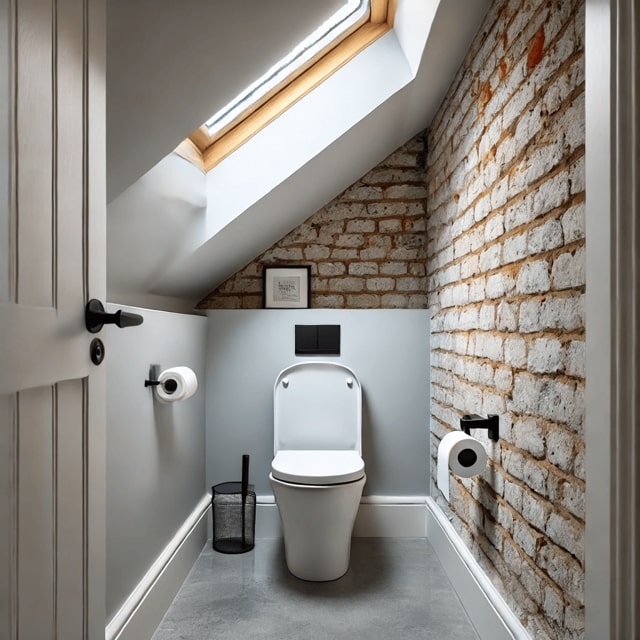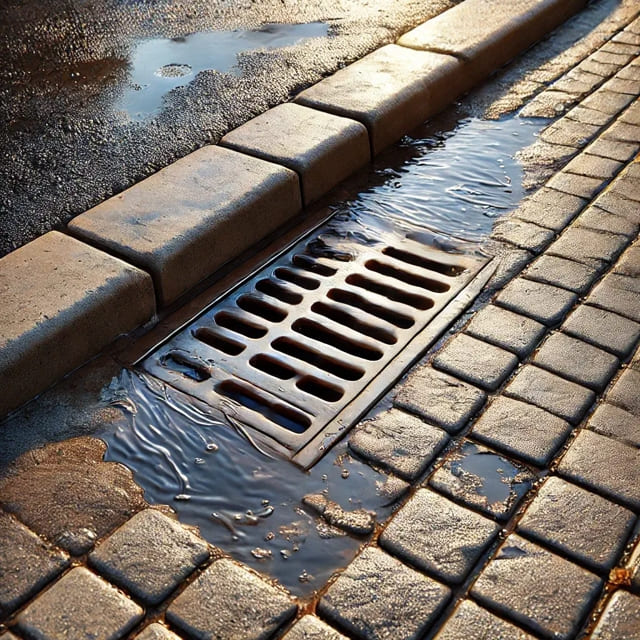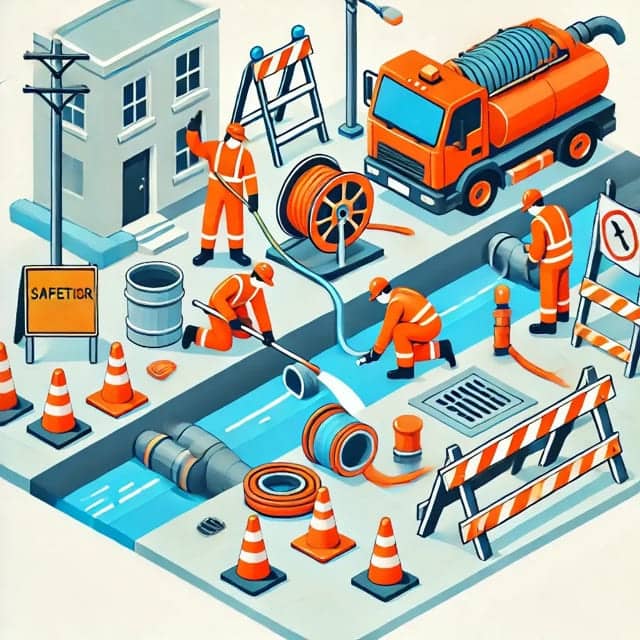Blocked drains often escalate from a small issue to a serious problem. This is particularly the case during wet weather.
For more details see our main main service page.
Typical Reasons for Blocked Drains in Killingbeck
In Killingbeck, drainage systems, like anywhere else, can suffer from a variety of blockages, often caused by everyday activities. The main causes include:
Build-Up of Grease and Fat
Fat, oil, and grease are common causes of blockages in kitchen drains.
Once cooled, they solidify in the pipes, eventually building up and restricting water flow.
Eventually, this buildup can completely block the drain, resulting in water backing up. This often occurs in takeaways around Killingbeck.
Hair Buildup and Soap Residue
Bathroom drains often suffer from hair and soap scum forming clogs.
As it accumulates, it prevents proper drainage, causing water to drain slowly or pool.
Foreign Objects
Objects such as wipes, sanitary items, and small toys can block pipes.
Unlike toilet paper, these items don’t disintegrate in water and can cause major blockages.
Outdoor Debris and Roots
Outside drains in Killingbeck can be affected by tree roots seeking moisture from pipes, as well as leaves and debris during the autumn months.
During periods of heavy rainfall, this can cause significant drainage blockages.

When to Call a Drain Unblocking Service
If you’re experiencing any of the following issues, it may be time to contact a drain unblocking service in Killingbeck:
Slow Draining Water
Slow-draining sinks, baths, or showers often indicate a blockage.
Foul Odours
If your drains emit foul smells, there may be decaying debris blocking the pipes.
Unusual Water Noises
Gurgling sounds in drains usually mean air is struggling to pass a blockage.
Standing Water or Overflowing Drains
Overflowing drains or standing water usually indicate a major blockage.
Expert Drain Unblocking in Killingbeck
A blocked drain is best dealt with by a professional. If local authorities haven’t helped, hiring a drain expert is advisable.
Water Jetting at High Pressure
Using high-pressure water jets is a highly effective drain clearing technique. This involves blasting water at high speed through the pipes to dislodge and clear away blockages caused by grease, debris, or tree roots.
It’s a thorough and eco-friendly method that doesn’t use chemicals.
Drain Snaking and Auger
For smaller or more localised blockages, a drain snake or auger may be used.
These devices are designed to physically clear hair, soap, or object clogs.
Camera Inspections of Drains
If the blockage isn’t obvious, a CCTV inspection may be required.
It involves a camera being inserted into the drain to pinpoint the issue.
Fixing Blocked Drains
Major blockages can result from broken or collapsed drainage.
Drain repair services can fix these problems, ensuring your drainage system remains in good working order for years to come.

Killingbeck: A Vibrant Leeds District with Essential Drainage Needs
Killingbeck, located in east Leeds, West Yorkshire, is a thriving district known for its historical roots and modern amenities.
The area, named after the historic Killingbeck family, is strategically situated near Seacroft, Cross Gates, Gipton, and Halton Moor, offering a convenient blend of residential and commercial developments.
However, maintaining the district’s infrastructure, particularly its drainage systems, is vital to preserving its quality of life.
Drainage Challenges in Killingbeck
Killingbeck’s mix of older properties and newer developments can lead to common drainage issues, such as:
- Blocked Drains: Often caused by the improper disposal of items like wet wipes, grease, or sanitary products.
- Heavy Rainfall: Yorkshire’s frequent rain can overwhelm drains, leading to localised flooding.
- Tree Root Intrusion: Older drainage systems may be impacted by tree roots, causing blockages or pipe damage.
Left unaddressed, these issues can result in unpleasant odours, slow-draining water, and structural damage to properties.
Local Solutions for Drainage Maintenance
Residents and businesses in Killingbeck can address drainage concerns by taking proactive steps and seeking professional assistance. Here are key resources:
- Yorkshire Water: Handles public sewer issues and provides support for drainage problems beyond private property boundaries.
- Leeds City Council (leeds.gov.uk): Offers guidance and services related to communal drainage systems.
Tips for Preventing Drainage Issues
- Dispose of Waste Responsibly: Avoid flushing wet wipes or pouring fats down the sink.
- Clear Outdoor Drains Regularly: Remove debris such as leaves and soil to keep water flowing.
- Monitor for Early Signs of Blockages: Slow drainage or bad smells are often the first signs of an issue.
Why Proper Drainage Matters in Killingbeck
Maintaining functional drainage systems is crucial for preventing disruptions and ensuring Killingbeck continues to thrive.
Whether managing minor clogs or addressing complex issues, timely maintenance and expert solutions are key to preserving the district’s infrastructure.
For more information on managing drainage in Killingbeck, consult trusted resources like Yorkshire Water or reach out to local authorities for assistance.

Who Is Responsible for Unblocking Your Drain in Killingbeck: Tenant, Landlord, or Local Council?
In Killingbeck, a vibrant area of east Leeds, understanding who is responsible for unblocking drains can help resolve issues efficiently.
Responsibility typically depends on the cause and location of the blockage, whether it lies with the tenant, landlord, or local council.
Tenant Responsibility
Tenants in Killingbeck are usually responsible for unblocking drains caused by misuse or day-to-day activities. Examples include:
- Flushing inappropriate items such as wet wipes, sanitary products, or nappies.
- Pouring fats, grease, or food scraps down kitchen sinks, which can harden and cause clogs.
- Allowing hair or soap scum to accumulate in bathroom drains.
To prevent blockages, tenants should adopt good habits like using drain strainers and disposing of waste properly.
Minor issues, such as slow-draining water, are typically the tenant’s responsibility to manage.
Landlord Responsibility
Landlords must ensure the structural integrity of the drainage system and address problems beyond the tenant’s control. Their responsibilities include:
- Repairing collapsed or damaged pipes.
- Clearing blockages caused by long-term wear and tear, such as tree root intrusion.
- Ensuring the drainage system is functional and in good condition at the start of a tenancy.
If the issue arises from aging infrastructure or faulty installation, the landlord must arrange and cover the cost of repairs.
Local Council Responsibility
For blockages beyond private property boundaries, Leeds City Council or Yorkshire Water typically manages the issue. Their responsibilities include:
- Clearing blockages in public sewers or drains in communal spaces like roads or parks.
- Managing main sewer systems serving multiple properties.
Public sewer issues in Killingbeck should be reported to Yorkshire Water (yorkshirewater.com) or Leeds City Council for resolution.
Steps to Handle Drainage Issues in Killingbeck
- Check your tenancy agreement: This document clarifies the responsibilities of tenants and landlords.
- Identify the blockage location: If the problem lies outside your property boundary, contact the local council or Yorkshire Water.
- Act quickly: Timely intervention can prevent further damage and inconvenience.
Maintaining effective drainage systems in Killingbeck ensures homes, businesses, and public spaces remain functional and comfortable.
By understanding their roles, tenants, landlords, and local authorities can work together to minimise disruptions and maintain smooth drainage operations in this thriving Leeds community.

